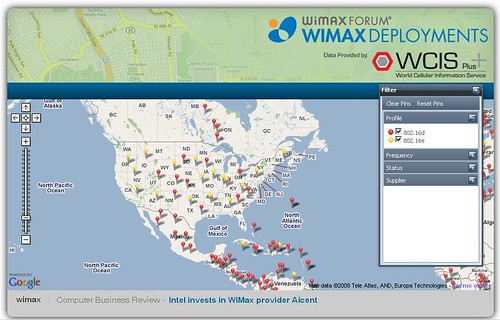BBC Tracks a Container
Posted by Sam Churchill on September 18th, 2008The Box is an ambitious and unique year-long project for BBC News to tell the story of international trade and globalisation by tracking a standard shipping container around the world (video).
The Box will criss-cross the world
It is a project which plans to deliver content for television, radio and online audiences - telling the individual stories behind what makes the global economy tick.
We have painted and branded a BBC container and bolted on a GPS transmitter so you can follow its progress all year round as it criss-crosses the globe. The Box will hopefully reach the US, Asia, the Middle East , Europe and Africa and when it does BBC correspondents will be there to report on who’s producing goods and who’s consuming them.
The Container Shipping Information Service (CSIS) is an organisation, formed in 2007, comprising 23 of the largest container shipping companies across the world (see About Us for members list).
 Two providers of RFID-based asset tracking have added GPS tracking. WhereNet has introduced GPS capabilities to version 4.0 of its Marine Terminal Solution, and Identec Solutions, based in Lustenau, Austria, has added GPS to its I-Q RFID tag.
Two providers of RFID-based asset tracking have added GPS tracking. WhereNet has introduced GPS capabilities to version 4.0 of its Marine Terminal Solution, and Identec Solutions, based in Lustenau, Austria, has added GPS to its I-Q RFID tag.
Savi Networks operates a global wireless data-capture network and provides a real-time information service called SaviTrak that automatically tracks the location, security and condition of inventory as it’s transported throughout the global supply chain.
The Port of Rotterdam, Europe’s largest port, uses SaviTrak to enhance efficiency and security for shippers and port terminal operators. Lani Fritts, chief operating officer of Savi Networks, says, “Europe, which also includes the Port of Felixstowe in the United Kingdom, is a critical link in our growing network because so much world trade flows into and out of this region.”
Above is my Gigapixel panorama of Port of Portland’s Terminal 6, Oregon’s only deep draft container terminal. Their CargoTracker is a free service. Portland Oregon’s marine operations at its four terminals generated 11,724 jobs, nearly $871 million in personal income and close to $89 million in state and local taxes.
















































